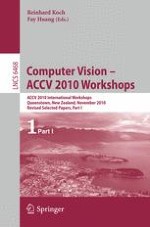The two-volume set LNCS 6468-6469 contains the carefully selected and reviewed papers presented at the eight workshops that were held in conjunction with the 10th Asian Conference on Computer Vision, in Queenstown, New Zealand, in November 2010.
From a total of 167 submissions to all workshops, 89 papers were selected for publication. The contributions are grouped together according to the main workshops topics, which were: computational photography and aesthetics; computer vision in vehicle technology: from Earth to Mars; electronic cultural heritage; subspace based methods; video event categorization, tagging and retrieval; visual surveillance; application of computer vision for mixed and augmented reality.
